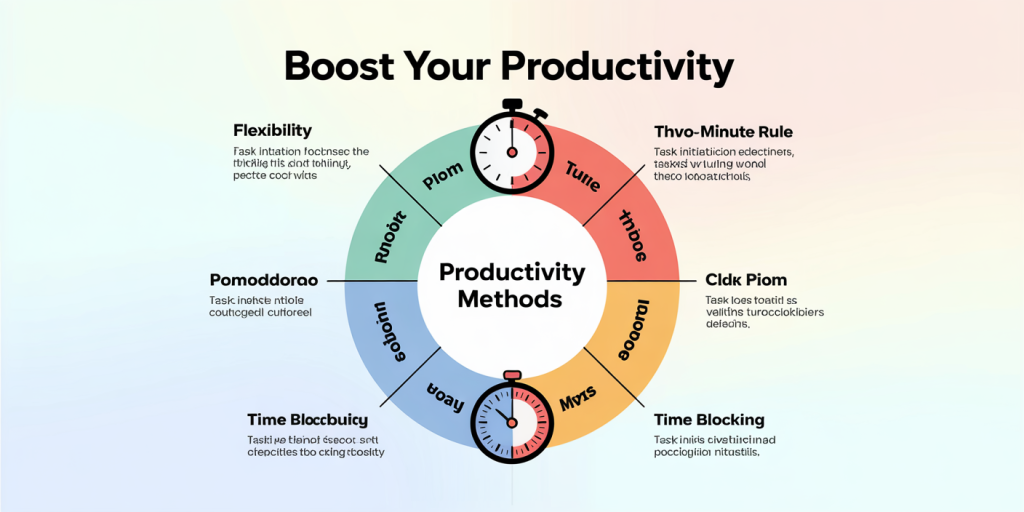How to Master Self-Discipline with the “Two-Minute Rule”
Self-discipline is a fundamental skill that empowers individuals to achieve goals, maintain focus, and foster long-term success. However, many people struggle to build and sustain discipline due to procrastination, lack of motivation, or the overwhelming nature of large tasks. A powerful technique that has gained popularity in productivity and behavioral psychology circles is the “Two-Minute Rule.” This simple yet effective strategy offers a practical way to overcome inertia, improve habits, and master self-discipline.
The Two-Minute Rule was popularized by productivity consultant James Clear in his bestselling book *Atomic Habits*. The core idea is straightforward: when starting a new habit or task, commit no more than two minutes to its initiation. By lowering the activation energy required to begin, this rule effectively reduces procrastination and builds momentum for deeper engagement. This article explores how the Two-Minute Rule works, why it is effective, practical applications, and how to incorporate it into daily routines to cultivate lasting self-discipline.
Understanding the Psychology Behind the Two-Minute Rule
The main psychological challenge to starting any new habit or task often lies in the perceived difficulty or time commitment. This obstacle creates a mental barrier, triggering procrastination or avoidance behaviors. The Two-Minute Rule addresses this by instructing individuals to start with a micro-commitment that feels manageable and non-threatening. Psychologists refer to this as “behavioral activation,” a concept that promotes action to counteract inertia.
Research in behavioral science supports the effectiveness of breaking down complex goals into manageable steps. According to a study published in *Behavioral Science & Policy*, starting small increases the likelihood of habit formation because it reduces cognitive load and decision fatigue. Additionally, the “foot-in-the-door” technique—whereby agreeing to a small initial request increases compliance with larger requests—underpins the Two-Minute Rule’s influence.
For example, if a person aims to develop a running habit, they might commit initially to putting on running shoes and stepping outside for two minutes. This seemingly small task often leads to longer runs because the hardest part—starting—has been completed. The Two-Minute Rule exploits this momentum by transforming daunting objectives into tiny, accessible actions.

Practical Implementation: Using the Two-Minute Rule in Daily Life
Applying the Two-Minute Rule requires identifying the larger task or goal and subdividing it into initial actions that can be performed within two minutes. This strategy helps bypass resistance and procrastination by focusing on the “gateway” behavior rather than the entire task.
For example, to improve writing productivity, a writer could commit to opening a blank document and typing a single sentence. Even if just for two minutes, this act kickstarts the creative process. Real-life case studies from corporate environments showcase how employees implement this method to overcome work overload. One notable instance is the use of the Two-Minute Rule in Atlassian, a software company, where team members begin daily coding or project updates with minimal initial steps, fostering continuous progress.
The key is consistency—performing the short action daily builds discipline, ultimately resulting in task completion and habit development. Moreover, the Two-Minute Rule can be tailored for various domains including fitness, study routines, household chores, or professional development. For example, to cultivate reading habits, one might read a single paragraph or page per session.
Furthermore, the strategy mitigates “all-or-nothing” thinking, a common cognitive distortion where individuals believe they must complete a large task in one go or not at all. By focusing on two minutes, accomplishment becomes attainable and less intimidating.
Comparative Analysis: Two-Minute Rule vs. Traditional Time Management Techniques
To better understand the benefits of the Two-Minute Rule, it is useful to compare it with other popular time management and productivity strategies such as the Pomodoro Technique and time blocking. Below is a table highlighting key differences:

| Feature | Two-Minute Rule | Pomodoro Technique | Time Blocking |
|---|---|---|---|
| Task Initiation Focus | Micro-commitment, starting small | Work in fixed 25-minute intervals | Allocates specific hourly slots |
| Purpose | Reduce procrastination, build impulse | Enhance focus through breaks | Structured planning and time allocation |
| Ideal Use Case | Starting habits or overcoming inertia | Prolonged focus sessions | Daily or weekly scheduling |
| Flexibility | Highly adaptable, minimal time needed | Requires timer and predefined periods | Requires advance planning |
| Psychological Benefit | Reduces activation energy | Balances work and rest | Ensures task completion time |
| Limitation | May not address sustained focus | Can disrupt flow during complex tasks | Less effective if plans are rigid |
Compared to the Pomodoro Technique, which demands fixed intervals and breaks, the Two-Minute Rule is simpler and more flexible, focusing solely on the initial hurdle of starting. Time blocking is excellent for comprehensive scheduling but may feel restrictive and overwhelming for beginners struggling with procrastination. Data from a 2022 productivity survey by *RescueTime* suggests that flexible micro-actions like the Two-Minute Rule have a higher adherence rate among novice habit builders (67%) compared to fixed schedules (52%).
Real-Life Success Stories Using the Two-Minute Rule
Several prominent figures attribute part of their productivity and habit-forming success to strategies similar to the Two-Minute Rule. One example is Jerry Seinfeld, who used a system of marking an “X” on his calendar every day that he wrote jokes, essentially building discipline by focusing on daily micro-habits. This approach aligns with the principle of initiating behavior with minimal resistance.
Another noteworthy case is from behavioral scientist BJ Fogg, who pioneered the idea of starting habits with actions that take less than two minutes. Fogg’s clients, ranging from executives to students, report that committing to tiny habits led to meaningful changes, such as improved exercise frequency, consistent meditation practice, and healthier eating choices.
Corporate environments also reflect the rule’s effectiveness. For example, a 2021 internal survey at Google revealed teams that implemented micro-task initiation policies—akin to the Two-Minute Rule—experienced a 30% improvement in project kick-off rates and reduced procrastination.
Common Challenges and How to Overcome Them with the Two-Minute Rule
Despite the simplicity of the Two-Minute Rule, some individuals face obstacles when applying it. One common challenge is not extending beyond the initial two minutes, which leads to dissatisfaction or incomplete progress. This may result from a lack of intrinsic motivation or clear goal setting.
To address this, it helps to pair the Two-Minute Rule with small rewards or reminders of the broader purpose of the task. For instance, someone aiming to declutter their home might commit to tidying one drawer for two minutes but remind themselves of the ultimate goal: a more organized, stress-free living space. This keeps motivation aligned and promotes task continuation after the micro-action.
Another challenge is the misconception that small efforts are insignificant. Data from habit formation research indicates that consistency is far more impactful than isolated instances of intense effort. Habit persistence is often achieved through repetition of small tasks rather than sporadic bursts of motivation. Balancing two-minute starts with gradually increasing task duration can foster a sustainable discipline-building rhythm.
Future Perspectives: Enhancing Self-Discipline through Micro-Habits and Technology
As technological advancement continues, the integration of digital tools with behavior change strategies like the Two-Minute Rule is poised to enhance self-discipline practices. Mobile apps employing artificial intelligence can remind users to initiate two-minute tasks, track adherence, and provide motivational feedback, thereby increasing accountability.

Moreover, future research in neuroscience may uncover more about how micro-action commitment influences brain pathways related to habit formation and motivation. Early findings in habit neuroplasticity suggest that small, repeated actions catalyze structural brain changes that support self-control and perseverance.
Workplaces are also likely to adopt micro-habit models within their productivity frameworks, fostering healthier work environments and enhancing employee well-being. Personalized workflows incorporating the Two-Minute Rule could reduce the mental load associated with large projects and promote incremental progress.
Additionally, educational systems may integrate micro habit-building techniques based on time-efficient initiation, helping students develop discipline without overwhelm, which can significantly improve learning outcomes.
The evolving landscape of self-discipline development underscores the value of simple, scientifically validated methods such as the Two-Minute Rule, combined with ongoing innovation in behavioral support technologies.
